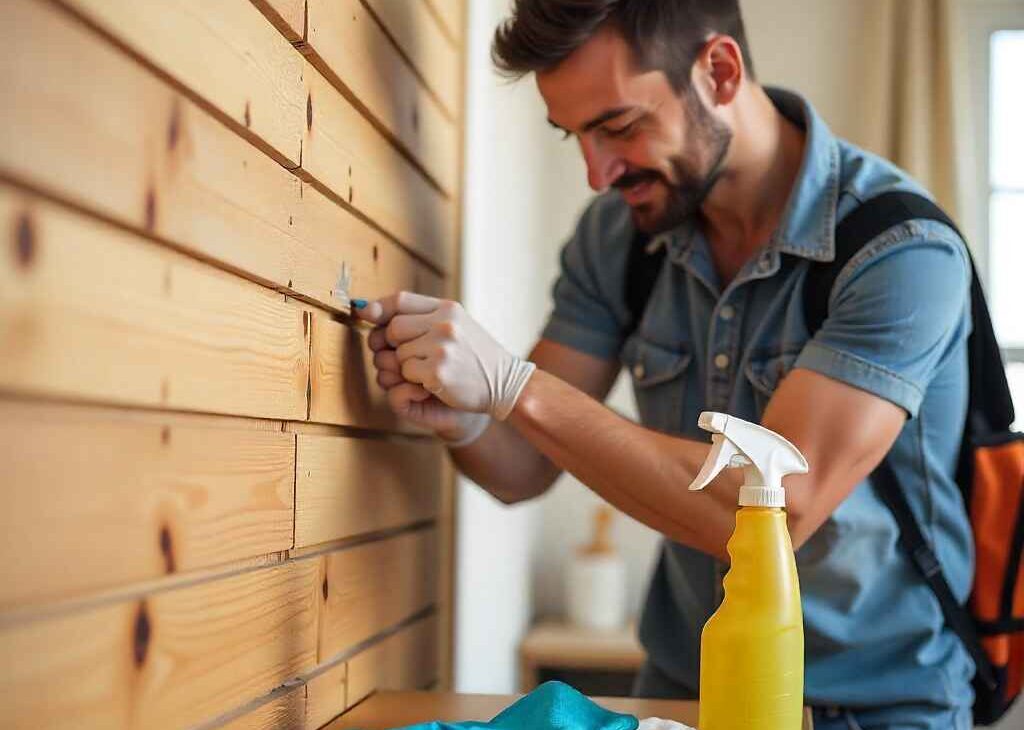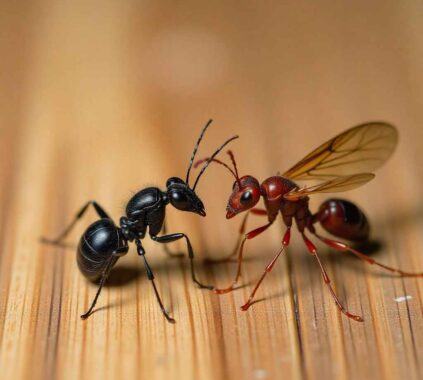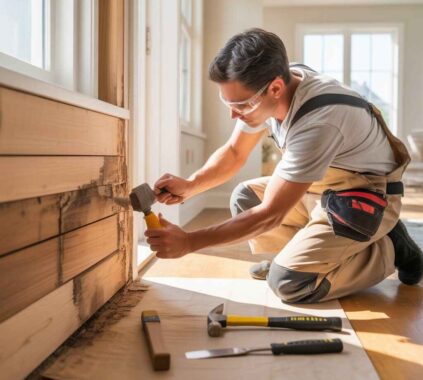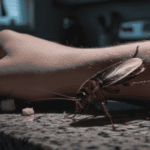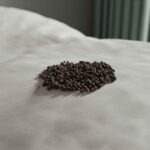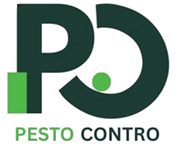Table of Contents
When it comes to protecting your home, nothing can be more frustrating than discovering termites eating away at your walls and furniture. The good news is that you don’t always need expensive professional help to fight back. With the right DIY termite treatment, you can handle small infestations on your own and prevent future damage.
In this detailed guide, you’ll learn everything you need to know, from understanding termite behavior to step-by-step DIY methods that actually work.
1. Understanding Termites Before Starting Any DIY Termite Treatment
Before jumping into DIY termite control, it’s important to know what you’re up against. Termites are tiny yet destructive insects that feed on cellulose, the main component of wood. If left unchecked, they can quietly damage your home’s structure and cause repairs worth thousands of dollars.
There are mainly three types of termites:
- Subterranean termites are the most common and dangerous type, living in the soil.
- Drywood termites infest dry wood and furniture.
- Dampwood termites prefer moist environments like basements or leaky walls.
A homeowner from Texas once shared how she noticed small piles of sawdust near her wooden baseboards. At first, she thought it was just dirt, but a closer look revealed mud tubes and hollow-sounding wood. Early detection saved her from major damage, and it can save you, too.
2. DIY Termite Treatment vs Professional: Which One Should You Choose?
This is one of the most common questions homeowners ask. DIY termite treatment vs professional services both have pros and cons.
- DIY termite control is cost-effective and ideal for minor infestations. You can use sprays, boric acid, or bait stations.
- Professional termite control, on the other hand, is better for deep, hidden infestations. Experts have specialized tools, chemicals, and training to eliminate colonies completely.
If your termite problem is small and localized, DIY termite treatment can be a great start. However, if you see widespread damage or termites inside walls, hiring an expert might be the safer long-term choice.
3. How to Get Rid of Termites Permanently
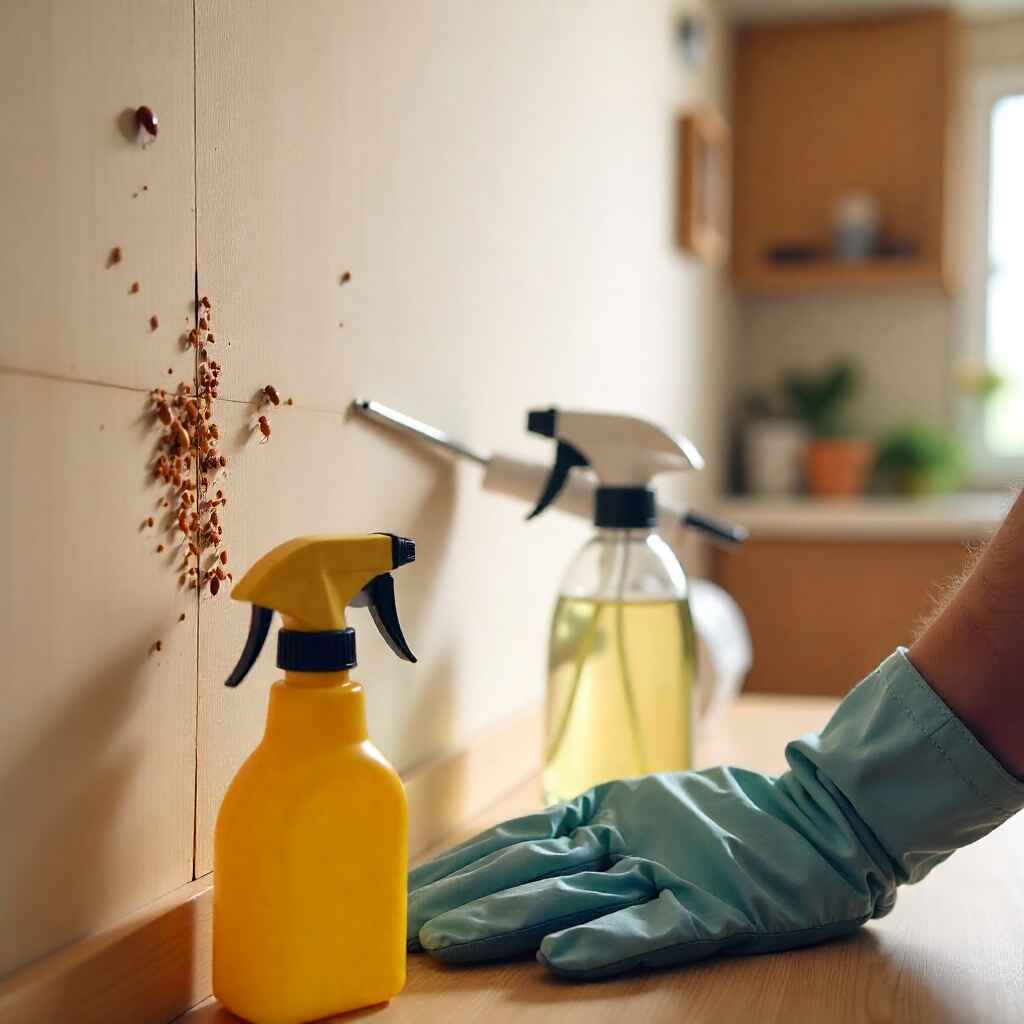
If you want to know how to get rid of termites permanently, it requires more than just spraying chemicals. The key is combining elimination with prevention.
Here’s a step-by-step plan for long-term termite removal:
- Inspect your home: Look for mud tubes, discarded wings, or hollow wood.
- Identify the species: Knowing the termite type helps determine the right treatment method.
- Apply boric acid: It’s one of the most effective and affordable termite killers.
- Use bait stations: These attract and kill termites slowly, wiping out entire colonies.
- Seal cracks and leaks: Moisture attracts termites — fix leaky pipes and seal openings.
- Create a soil barrier: Apply a termiticide around your foundation.
- Maintain routine checks: Inspect every few months to ensure they don’t return.
Remember, termites are stubborn pests. Consistency is key to permanent control.
4. DIY Termite Treatment Home Depot: What to Buy and How to Use It
If you’re wondering where to find the right tools and products for DIY termite treatment, Home Depot is a great place to start. They carry a variety of termite sprays, baits, foams, and boric acid powders that are easy to use.
Here are a few essentials you can get from your local store:
- Termite Sprays: Ideal for direct contact kills on visible termites.
- Boric Acid Powder: Can be mixed with water and sprayed or applied dry.
- Termite Bait Stations: Perfect for controlling underground colonies.
- Protective Gear: Always wear gloves and masks when applying chemicals.
One homeowner shared how a single weekend trip to Home Depot helped him tackle a small termite issue under his deck. With patience and proper application, DIY termite products can go a long way.
5. DIY Termite Treatment in Walls: Step-by-Step Process
When termites invade walls, they’re usually part of a larger, hidden colony. DIY termite treatment in walls needs precision and care.
Step 1: Identify Termite Activity
Look for bubbling paint, small holes, or hollow wood sounds when you tap the wall.
Step 2: Drill Small Holes
Drill holes about every 10 inches in the infested area.
Step 3: Apply Termiticide or Foam
Inject termite foam or boric acid solution into each hole. The foam expands to reach hidden areas.
Step 4: Seal the Holes
Once the treatment dries, fill the holes with wood filler and repaint.
This targeted approach is one of the best ways to treat termites in walls without tearing down your drywall.
6. Best Termite Treatment Do It Yourself: Proven Natural and Chemical Options
When it comes to the best termite treatment do-it-yourself methods, you have two main categories: natural and chemical.
Natural DIY Termite Treatments
- Boric Acid: Effective and safe for indoor use.
- Orange Oil: Kills termites on contact and smells pleasant.
- Diatomaceous Earth (DE): A natural powder that dehydrates termites.
- Neem Oil: Disrupts termite growth and reproduction.
Chemical DIY Treatments
- Liquid Termiticides: Used to create protective soil barriers.
- Foam Termiticides: Ideal for injecting into wall voids.
- Termite Bait Stations: Used outdoors to kill colonies over time.
Natural options are great for prevention and small infestations, while chemical treatments work best for active termite problems.
7. Termite Bait Stations: The Smartest DIY Termite Control Method
Among all DIY termite control tools, termite bait stations are one of the most reliable and effective. They use slow-acting insecticides that termites carry back to their colony, eventually killing the entire population.
How to use termite bait stations:
- Place the stations around your home’s perimeter, near moist soil or wood contact points.
- Check them every few weeks to monitor termite activity.
- Replace baits once termites have consumed the poison.
Many homeowners find DIY termite bait stations to be an excellent middle ground between prevention and professional treatment.
8. How to Treat Termites in Walls: Professional Tips for DIYers
Even if you’re handling the issue yourself, it helps to use a few professional tips. Here’s how you can treat termites in walls like an expert:
- Use a moisture meter to find hidden damp areas. Termites love moisture.
- Apply foam insecticide to wall studs and wooden beams.
- Use borate-based wood treatment on exposed structures.
- Repaint and seal all treated surfaces to keep them termite-proof.
Consistency, inspection, and proper application are what make DIY termite treatments successful.
9. DIY Termite Bait Stations: Step-by-Step Setup Guide
Here’s how to install DIY termite bait stations effectively:
- Buy pre-baited stations or kits online or at hardware stores.
- Dig shallow holes (around 6–8 inches deep) near the foundation.
- Insert the bait station and make sure the top is flush with the ground.
- Inspect monthly for signs of termite activity.
- Replace the bait as needed for continuous protection.
With regular monitoring, DIY termite bait stations can dramatically reduce termite populations.
10. FAQS:
1. Can I treat for termites myself?
Yes, small infestations can be handled with DIY termite treatment using boric acid, foams, or bait stations.
2. What is the best homemade termite killer?
Boric acid is the most effective DIY termite treatment for killing termites naturally.
3. Does vinegar kill termites?
Vinegar can help in DIY termite treatment but only for minor infestations — it’s not a full solution.
4. What’s the fastest way to get rid of termites?
Using DIY termite treatment with termite sprays or foams is the quickest method.
5. What is the permanent solution of termites?
Combining DIY termite treatment with prevention methods like sealing cracks ensures long-term protection.
6. What do termites hate most?
Termites hate sunlight and dryness — both can help make your DIY termite treatment more effective.
11. Final Thoughts: Can You Really Win the Termite Battle?
Absolutely, but it requires persistence. While DIY termite treatment can effectively control small infestations, don’t hesitate to call professionals if things get out of hand. The best strategy often combines prevention, monitoring, and timely action.
Think of your home as a living system. The more attention you give it, the healthier it stays. By following the steps outlined here and using reliable products, you can protect your home, save money, and say goodbye to termites for good.

